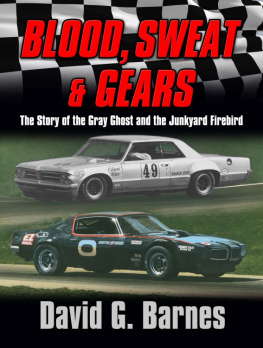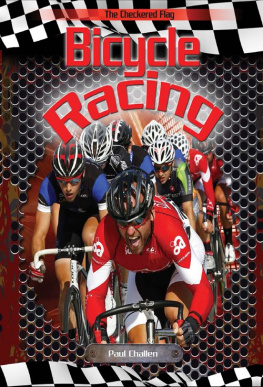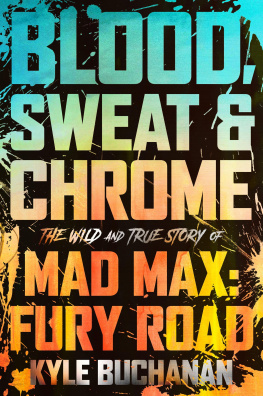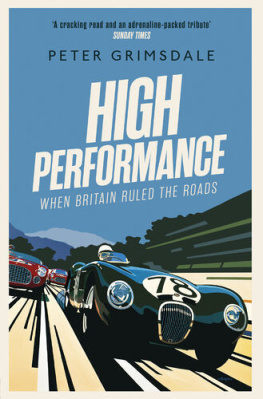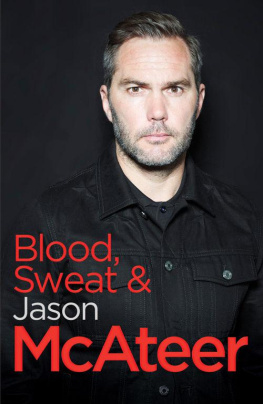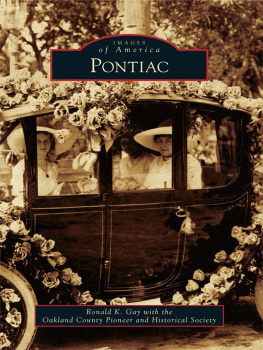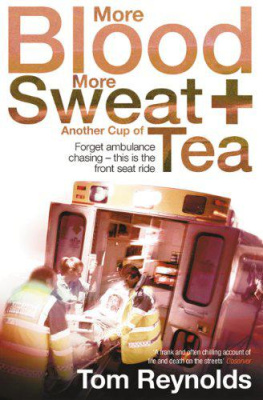Special Smashwords Edition
Blood, Sweat & Gears
The Story of the Gray Ghost and the JunkyardFirebird
by
David G. Barnes

This book is a work of historical fiction.But for the main characters and historically accurate places andevents, the names, characters, places and incidents are either theproduct of the authors imagination or are used fictitiously. Anyresemblance to other actual persons, living or dead, or to otheractual events or locales is entirely coincidental.
Blood, Sweat & Gears
Special Smashwords Edition
This eBook is licensed for your personalenjoyment only. This eBook may not be re-sold or given away toother people. If youre reading this eBook and did not purchase it,or it was not purchased for your use only, then you should returnit and purchase your own copy. Thank you for respecting the hardwork of the author.
Copyright 2014 David G.Barnes . All rights reserved, including theright to reproduce this book, or portions thereof, in any form. Nopart of this text may be reproduced, transmitted, downloaded,decompiled, reverse engineered, or stored in or introduced into anyinformation storage and retrieval system, in any form or by anymeans, whether electronic or mechanical without the express writtenpermission of the author. The scanning, uploading, and distributionof this book via the Internet or via any other means without thepermission of the publisher is illegal and punishable by law.Please purchase only authorized electronic editions and do notparticipate in or encourage electronic piracy of copyrightedmaterials.
The publisher does not have any control overand does not assume any responsibility for author or third-partywebsites or their content.
Cover designed by Telemachus Press, LLC
Cover photos by Theodore Roc Lambiris
Cover art:
Copyright iStockphoto/13018042_fcknimages
Published by Telemachus Press, LLC atSmashwords
http://www.smashwords.com
http://www.telemachuspress.com
ISBN: 978-1-941536-45-2 (eBook)
ISBN: 978-1-941536-46-9 (Paperback)
Version 2014.10.15
Acknowledgements
Blood, Sweat & Gears
Thank you to each of the following people;without your contributions and/or support this book would not havebeen written or published:
Heidi Barnes
Herb Adams
M. Joan Barnes
Emma Barnes
Colin Barnes
Al Rucka
Sandi Adams
Bob Tullius
Milt Minter
Joe Brady
Tom Nell
Ted Lambiris
Harry Quackenboss
Jonathan Brelsford
Susanne Fox
Lori Stone-Handelman, PhD of Clear VoiceEditing
Mike Miletic, MD
Kevin Rushton
Gail Wambsgans
Steve Jackson of Telemachus Press
Karen Lieberman, PhD of Telemachus Press
Susan Adams, of Susan Adams Photography
This book is a fictional account of actualhistorical events. Its based on a true story but is not purelyfactual. Memories of the people who lived this story have fadedsince the early 1970s. Over 40 years had passed at the point thisbook was published. Also, this book does not purport to be ascholarly, historical publication with footnotes, annotations andsources. Rather, it contains creative elements. The dialogue islargely fictitious and some events have been changed or excluded.For example, the description of one race in 1971 has not beenincluded here because, while at least one historical documentindicated that the Trans-Action team raced there, Herb Adams has norecollection of it. Also, one of the characters in this book (Jim)is fictitious; he did not participate as a team member in 1971 and1972, but he is loosely based on a young man who was, in fact, amember of the team during their brief 1973 NASCAR season. His realname has been lost to history (so far).
Dedication
To my wife Heidi, our children Emma andColin and my parents Joan and Gordon.
Dont talk to me about aesthetics ortradition what the American people like, is to think theunderdog still has a chance.
George Steinbrenner
Blood, Sweat & Gears
Chapter 1
Milt Minter winced at the earsplitting blastechoing from below him on the bridge abutment. JesusChrist, he shouted, recoiling. For a moment he thought theoverpass would collapse and he white-knuckled the railing. Minterstared incredulously at the smoking wreck below as if it were afleeting vision from a nightmare.
The shock wave from the massive collisionrolled through him and across the racetrack like a thunderclap. Thesounds of the crash, an alien reverberation of squealing rubber andcrunching metal, hung in the pure, still Wisconsin air. Brokenglass, tinkling onto the warm asphalt, punctuated the smokingsilence. An indifferent raven flew overhead. Minter glancedwide-eyed at it before regaining his senses and running off thebridge to the aid of his fellow driver. The ring of distant churchbells wafted absently over the abruptly silent track.
The Firebird racing pit crew, like everyonein the vicinity of the racetrack, heard the crash. They feltit. They knew who it was. Their car was the only one on theracetrack; their driver was practicing. The racetracks emergencycrew immediately swung into action, racing toward the crash site atthe bridge abutment, sirens blaring. Moments later the crewextricated the bloodied, unconscious driver from the remnants ofhis Firebird and rushed him to the hospital.
A few days later the driver died.
Several minutes before the crash, theFirebird driver had pulled slowly out of the pit and driven histeams blue and white Pontiac Firebird onto the Road Americaracetrack in Elkhart Lake, Wisconsin. Road America was built in themid-1950s to meet the demands of amateur drivers in Chicago who, inthe 1940s and early 1950s, drove up to Elkhart Lake on the weekendsto race on the old highways circling it. It was a good-sized track,four miles around with plenty of 90-degree turns, running clockwisein an L-shape. The start-finish line was halfway up the mainstraightaway. The first official race on the Road America track washeld in 1955. By the summer of 1970, fifteen years later, fivebridges spanned the track in various places, allowing pedestrianand vehicle access to the infield and paddocks. Some of thesebridges were built with reinforced concrete.
On that warm July day, another Trans-Amdriver, Milt Minter, had just spoken to the Firebird driver aboutthe upcoming race. The driver was no stranger to Trans-Am racing,having won the series drivers championship a few years earlier.Minutes later, Minter stood on one of the bridges watching himdrivesizing up his competition. As the Firebird racing team lookedon from pit road, its driver took the powerful Pontiac Firebirdskillfully around the course, cutting the apexes, smoothly braking,upshifting, downshifting, and accelerating at all the right placeson the track. He was a professional driver and it clearly showed,thought Minter.
But then something went terribly wrong.
The driver hit the brakes hard, spewingblue-black smoke and a wicked screech from its big slicks. A splitsecond later it collided head-on with a concrete bridge abutment athigh speed. No spectator experienced the thundering crash andvibration more immediately and personally than Milt Minter on theoverpass above.
Chapter 2
Pontiac Motor Division product engineer HerbAdams sat in his suburban Detroit living room after work, watchinga small black and white television flicker to life as he settled onhis couch with a can of cheap, cold beer. The voices of his smallchildren reverberated throughout his modest home. Still in histhirties, he stood a trim five feet ten inches with neatly cutbrown hair and sparkling brown eyes to match. Adams ran PontiacsSpecial Projects Group, which meant that his part-timeresponsibility was to provide engineering support to Pontiacsracing efforts in an effort to bolster GMs sales.
Next page
